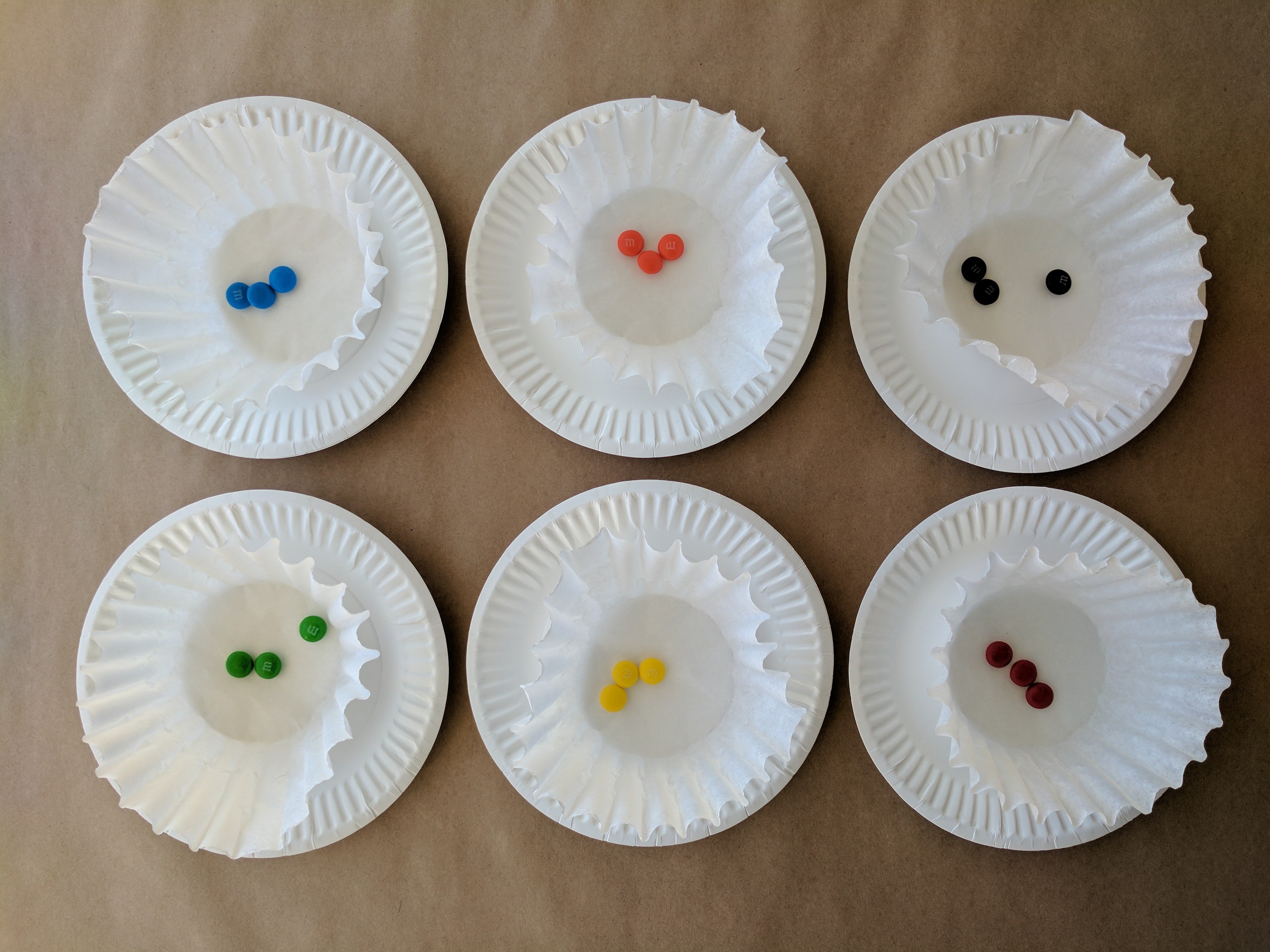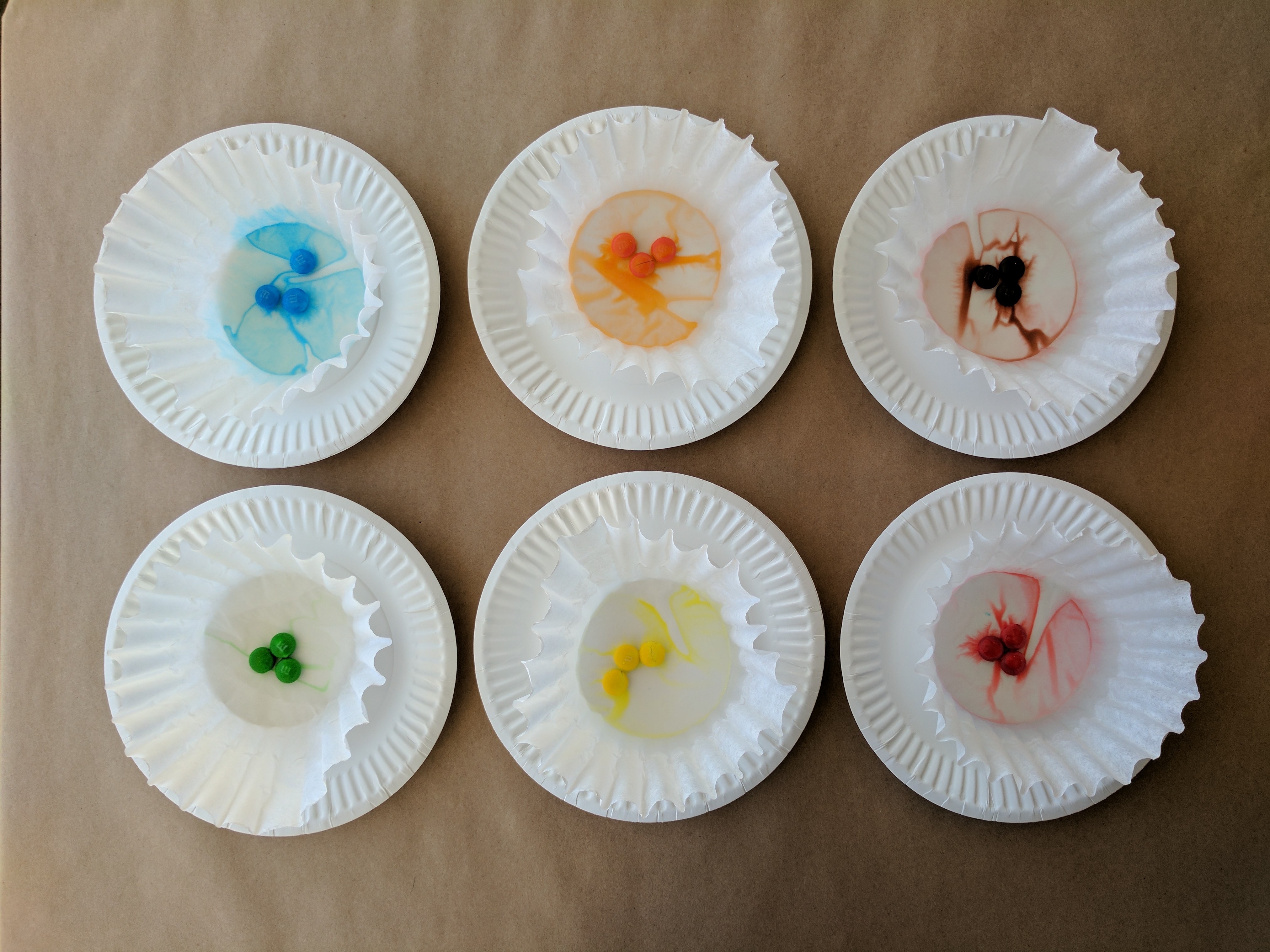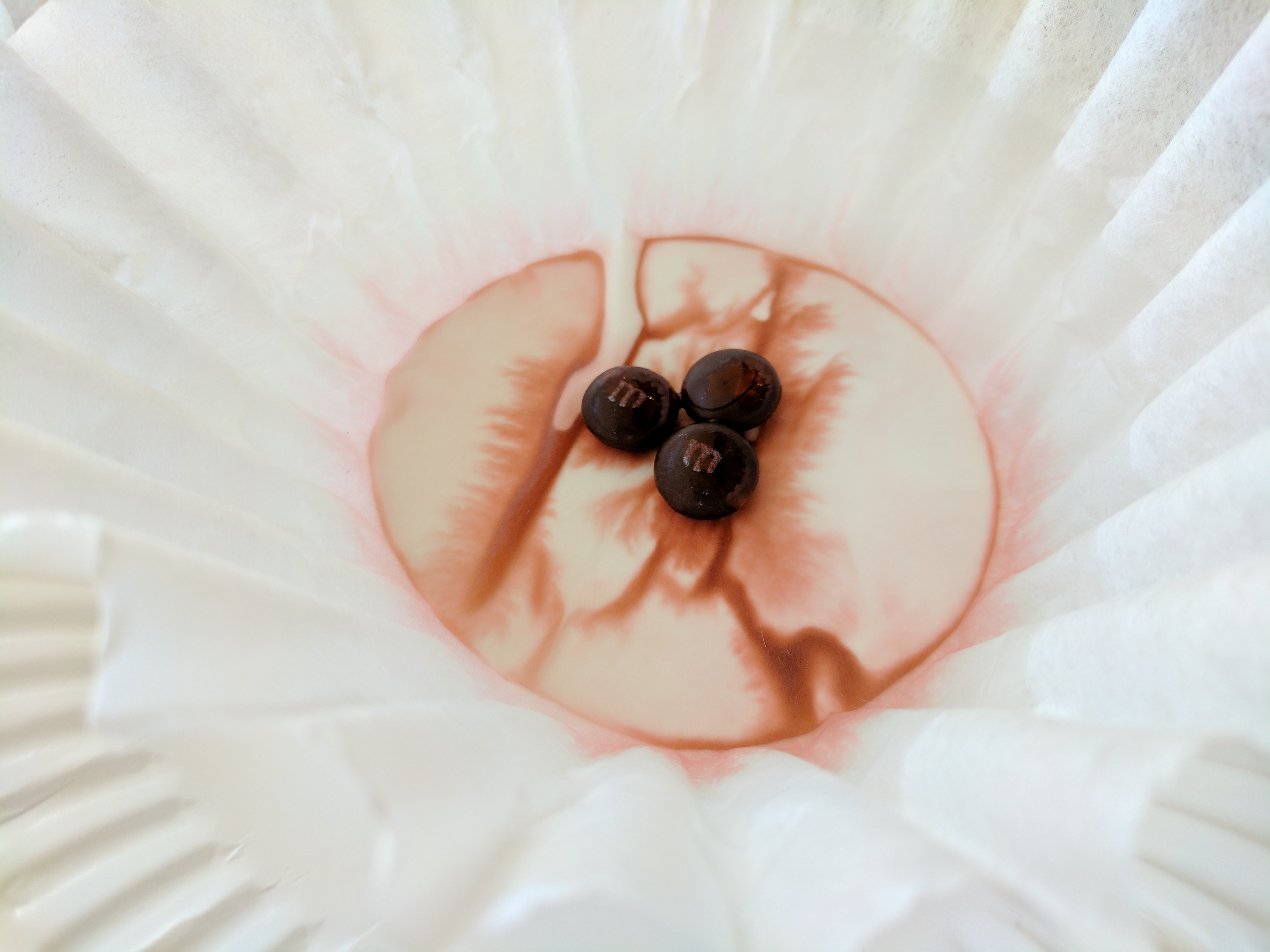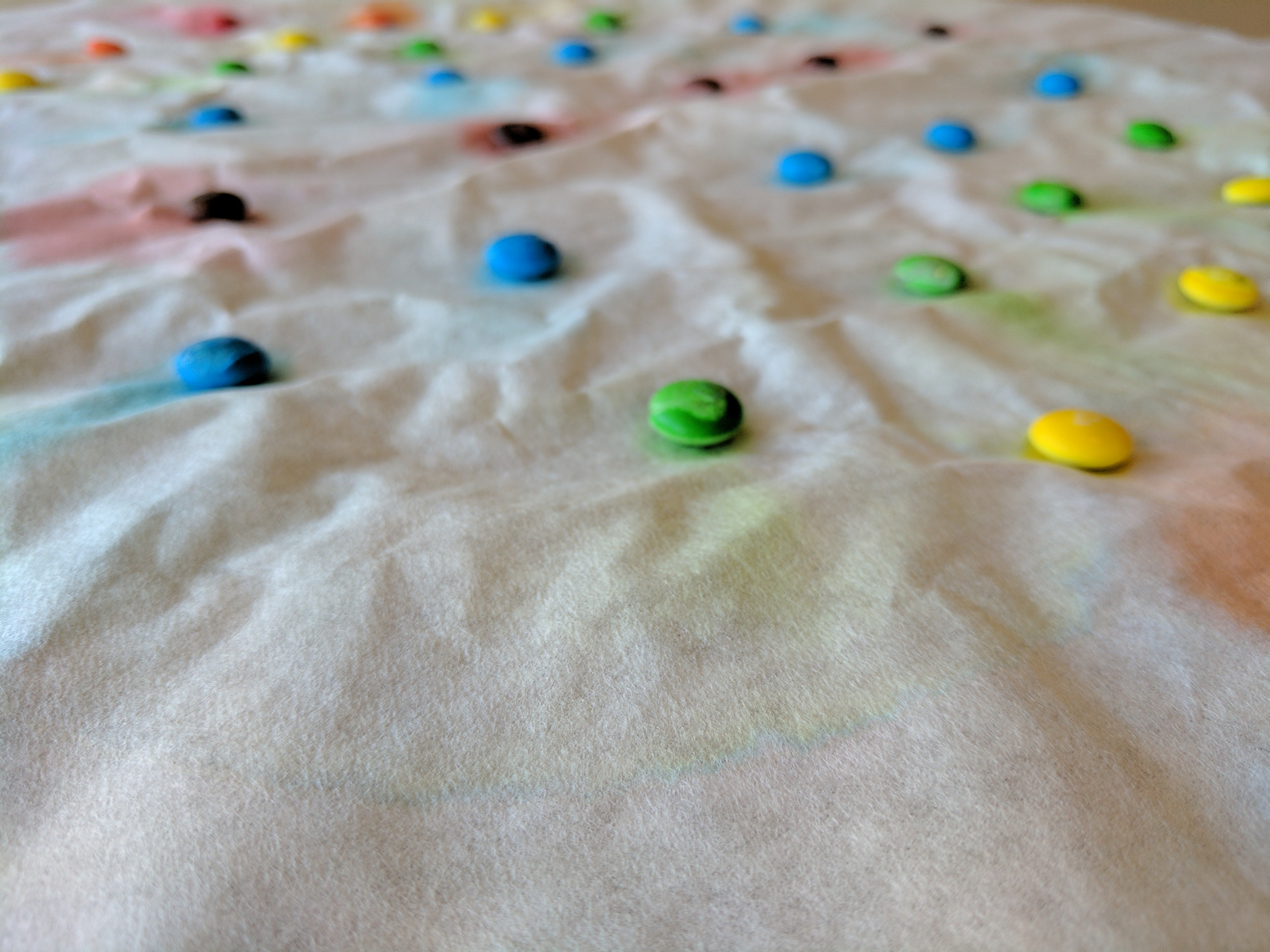Step-by-step tutorial
Step 1
Place white coffee filters on plates (using white filters and plates worked best to allow the color to show through more clearly). Paper towels also worked well for us. Designate one filter for each color.

Step 2
Fill a cup with warm water. Pick up an M&M and hold it underwater for a couple of seconds. Drop it back into the coffee filter. Repeat this for all the colors.

Tip
Tip: You can also use a straw or pipette to drop warm water over the candy.
Step 3
Keep experimenting! The effect can be a bit subtle, so look closely at what happens to the colors as they spread through the filter paper. For some colors of candy, the color on the filter paper will just spread and get lighter as it travels farther from the candy. But other colors of candy usually purple, black, or brown, you'll actually see the smudge on the filter paper separate into different colors.

Learn more
What you're seeing there is the different colors of food dye being separated out. Scientists call this process of separating out the parts of a mixture chromatography. In a lab, this same technique can be used to figure out what a mystery mixture is made of, or to purify a mixture by removing the bits you don't want. This works because the different parts of the mixture move through the filter paper at different rates. If several colors of food dye were used to make your brown candy, the faster-moving colors will appear closer to the edges of the filter, while the slower-moving colors stay closer to the center. That's why you can see tinges of blue at the edge of the brown coloring.
Final result!
We also saw bits of blue coming through our green coloring. What colors did you see in your experiment? Which candies used more than one color of dye? Where you saw color separation, which color moves the fastest? Try testing different materials and candies. We also tried the experiment on paper towels and giant coffee filter paper!

